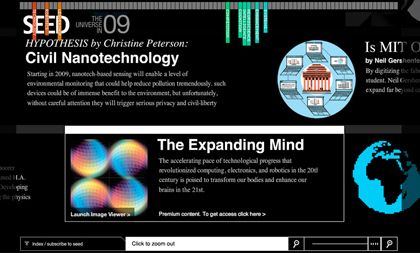You are currently browsing the category archive for the ‘Science’ category.
I am not a science person…that is not a surprise I am sure. But, I have to admit that being a student in such a diverse program has sparked a certain curiousity about many things that may come under this topic.
Slime Mold for one. I didn’t know anything about it before last Fridays’ Understanding Systems class. Apparently, Slime Mold is a very intelligent organism despite lacking a brain. I won’t try to describe the scientific and biological traits of the slime mold, read about it here. So, where am I going with this? Scientists recently conducted a study using slime mold to illustrate the amazing capabilities of this ‘creature’. They re-created the patterns of cities around Tokyo, and charged slime mold to figure out the most efficient way to get around the city. They designed the subway system, and amazingly, the results were almost identical to that of the complicated system designed by a team of engineers over a significant period of time. It took slime mold 26 hours by the way to achieve the same results. Study coauthor Mark Fricker of the University of Oxford, “In contrast, the slime mold has no central brain or indeed any awareness of the overall problem it is trying to solve, but manages to produce a structure with similar properties to the real rail network.” Read More
“When presented with oat flakes arranged in the pattern of Japanese cities around Tokyo, brainless, single-celled slime molds construct networks of nutrient-channeling tubes that are strikingly similar to the layout of the Japanese rail system, researchers from Japan and England report Jan. 22 in Science. A new model based on the simple rules of the slime mold’s behavior may lead to the design of more efficient, adaptable networks, the team contends.”
This new model based on the behaviour of slime mold, may very well “lead to the design of more efficient, adaptable networks, the team contends.”
Amazing.
Images: Science/AAAS
This is a beautiful book, “100 Places to Remember Before they Disappear”, is a collection of 100 photos, by some of the best photographers, of places around the world at risk of disappearing or threatened by climate change. These are based on reports from UN’s Intergovernmental Panel on Climate Change (IPCC).
Some are surprising, scary even – Chicago could experience a significant increase in flooding and heatwaves due to global warming.
The images are striking. In Western Hudson Bay, Canada, the Polar Bear population is expected to decline by 30% in the next 30-50 years, and there is already a reduction in the survival rate of the bears.
Climate change also poses a serious threat to the Maldives, 80% of the country is less than 1m above sea level. In the last 15 years, the sea level in the ocean surrounding the Maldives has risen by 4.5cm. And with almost all of the human settlements, vital infrastructure and industries located close to the coast, this is a serious threat.
The book is available for purchase online, and the images were a part of a large outdoor exhibit recently in Copenhagen.
Not sure how I feel about this…it is the same idea as the 3D baseball cards that I blogged about a while ago. I love technology as much as the next guy,
but I guess I am a bit of a purist when it comes to my printed material. An indication of how traditional media is desperately trying to keep pace with digital technology.
Check it out for yourself, in the July issue of Popular Science.
I remember seeing the 2008 October issue of Esquire that had printed 100,000 copies using e-ink for the cover. They were the first to use electronic paper technology in this way.
If I want to see moving images, I will go online. But hey…that’s just me, guess I am just old fashioned.
Can’t a magazine just be a magazine?
How long before we see an augmented reality version of Brad Pitt on the cover of Vanity Fair?

SEED is a great magazine that combines design and science. In 2009 they are celebrating my two favourite things – curiousity & creativity, with a site that attempts to ‘give us reason for optimism’. Reserve all assumptions and ‘pose better questions about the future’, Welcome to The Universe in 2009.
While I would never claim to have a scientific mind, I do have an intense curiousity for just about everything. This exhibit has it all. It has a similar interface to the MoMa online exhibition Design and The Elastic Mind, curated by SEED magazine’s Paola Antonelli. It has the same addictive quality…once you go there prepare to stay a while. I just scratched the surface tonight…i will be back!

.






 This is kinds crazy. Create a pattern via Twitter, it gets encoded somehow, and then gets turned into a graphic on a T-Shirt.
This is kinds crazy. Create a pattern via Twitter, it gets encoded somehow, and then gets turned into a graphic on a T-Shirt. 
Recent Comments